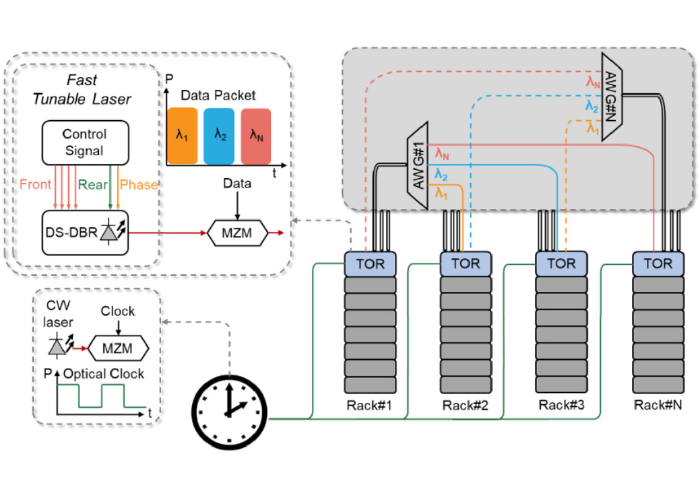
TRANSNET researchers lead multi-institutional collaboration on hollow-core fibre
TRANSNET led multi-institutional research collaboration between UCL, the University of Southampton, and the Chinese University of Hong Kong - Shenzhen , pioneers novel technology to advance optically switched data center interconnects. The research promises a significant milestone in the development of fast optical wavelength switching for data center interconnect technology.
In a world with an ever-increasing demand for data, data center interconnects form the backbone of modern digital infrastructure. They play a vital role in supporting the growing demand for data-intensive applications, cloud computing, and distributed computing architectures. However, the drastic increase in size and information rate has given rise to demands for solutions addressing the scalability and capacity challenges that intra-data center networks currently face.
Given the recent work on fast optical switching and the benefits it offers over multi-layer electrical switching, the authors propose a novel system design that utilises wavelength switching and hollow-core fibre (HCF). Among fast optical switching techniques, wavelength switching provides higher scalability, lower power consumption, and lower end-to-end latency. Minimising end-to-end latency, the total time it takes for data to travel from one point to another, is crucial to time-sensitive applications such as financial trading or autonomous car signals, where delays can negatively affect user experience or system performance.
Drawing from their rich technical expertise, the authors have designed a real-time fast wavelength-switched transmission system that improves the latency and performance of optically switched systems. Since the end-to-end latency of an optically switched system is influenced by how signals are processed and transmitted in the physical later, the authors carried out a proof-of-concept experiment to study the physical layer of an optically switched system. Through the combination of technologies such as optical clock synchronisation and fast tunable lasers, the system achieved ultra-low latency and improved data transmission performance.
The research presented in this paper marks a key milestone in the understanding of latency and performance in future optically switched networks. The findings showcased here have the potential to transform the future of data center networks, enabling higher scalability, lower power consumption, and enhanced real-time applications.
The authors overall demonstrate how hollow-core fibre can be leveraged beyond its known benefits to rethink and reform the whole concept of the application of optical fibres. The research not only offers a suitable alternative to optical fibres but pushes the boundaries of what can be achieved by doing things differently with hollow-core fibres. Further advancements in this area hold the promise of revolutionising data center interconnection and forever shaping the future of information processing.
About the paper
"Low-latency wavelength-switched clock-synchronized intra-data center interconnects enabled by hollow-core fiber," Opt. Express 31, 24739-24748 (2023)
Authors: Zichuan Zhou, Hubert Dzieciol, Kari Clark, Yuan Luo, David Richardson, Francesco Poletti, Polina Bayvel, Radan Slavik, and Zhixin Liu.
The work, published in Optics Express, was led by the Optical Networks Group at UCL in collaboration with researchers from the Optoelectronics Research Centre (ORC) at the University of Southampton and The Chinese University of Hong Kong - Shenzhen.
The research is supported by the National Natural Science Foundation of China and three EPSRC funded projects: TRANSNET, AirGuide Photonics, and ORBITS.
Read the full paper here.
Further information on TRANSNET authors